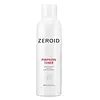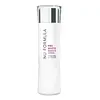What's inside
What's inside
 Key Ingredients
Key Ingredients

 Benefits
Benefits

 Concerns
Concerns

 Ingredients Side-by-side
Ingredients Side-by-side

Water
Skin ConditioningButylene Glycol
HumectantPropylene Glycol
HumectantPropanediol
SolventPEG/PPG-17/6 Copolymer
SolventPhenoxyethanol
PreservativeGlycerin
HumectantTrehalose
HumectantPolysorbate 20
EmulsifyingChlorphenesin
AntimicrobialCarbomer
Emulsion StabilisingNiacinamide
SmoothingDisodium EDTA
Sodium Hydroxide
BufferingBenzotriazolyl Dodecyl P-Cresol
UV AbsorberTris(Tetramethylhydroxypiperidinol) Citrate
UV Absorber1,2-Hexanediol
Skin ConditioningSodium Citrate
Buffering3-O-Ethyl Ascorbic Acid
Skin ConditioningTranexamic Acid
AstringentPanthenol
Skin ConditioningCystoseira Tamariscifolia Extract
Skin ConditioningCitrus Reticulata Peel Extract
Skin ConditioningXanthan Gum
EmulsifyingZinc PCA
HumectantTocopheryl Acetate
AntioxidantAllantoin
Skin ConditioningAlpha-Arbutin
AntioxidantCentella Asiatica Extract
CleansingAloe Barbadensis Leaf Extract
EmollientEthylhexylglycerin
Skin ConditioningCaprylyl Glycol
EmollientLeontopodium Alpinum Extract
Skin ConditioningGlycyrrhiza Glabra Root Extract
BleachingHibiscus Sabdariffa Flower Extract
Skin ConditioningGlucose
HumectantMagnesium PCA
HumectantSodium Lactate
BufferingSodium Hyaluronate
HumectantCopper Tripeptide-1
Skin ConditioningGlutathione
Potassium Sorbate
PreservativeSodium Benzoate
MaskingChondrus Crispus Extract
Skin ConditioningSerine
MaskingSucrose
HumectantUrea
BufferingGlycine
BufferingCalcium Chloride
AstringentPotassium Hydroxide
BufferingOrnithine
Skin ConditioningMaris Sal
Skin ConditioningAlanine
MaskingMagnesium Chloride
Hydroxypropyltrimonium Hyaluronate
Threonine
Histidine
HumectantAspartic Acid
MaskingValine
MaskingProline
Skin ConditioningDipotassium Phosphate
BufferingLysine
Skin ConditioningLeucine
Skin ConditioningTyrosine
MaskingIsoleucine
Skin ConditioningMagnesium Citrate
Skin ConditioningGlucosamine Hcl
Phenylalanine
MaskingGlutamic Acid
HumectantArginine
Masking1-Methylhydantoin-2-Imide
Skin ConditioningAsparagine
MaskingCitrulline
Skin ConditioningUric Acid
BufferingMethionine
Skin ConditioningTaurine
BufferingHydrolyzed Hyaluronic Acid
HumectantSodium Acetylated Hyaluronate
HumectantTryptophan
MaskingFormic Acid
PreservativeAmmonia
BufferingGlutamine
Skin ConditioningCysteine
AntioxidantHyaluronic Acid
HumectantSodium Hyaluronate Crosspolymer
HumectantHydrolyzed Sodium Hyaluronate
Skin ConditioningPotassium Hyaluronate
Skin ConditioningWater, Butylene Glycol, Propylene Glycol, Propanediol, PEG/PPG-17/6 Copolymer, Phenoxyethanol, Glycerin, Trehalose, Polysorbate 20, Chlorphenesin, Carbomer, Niacinamide, Disodium EDTA, Sodium Hydroxide, Benzotriazolyl Dodecyl P-Cresol, Tris(Tetramethylhydroxypiperidinol) Citrate, 1,2-Hexanediol, Sodium Citrate, 3-O-Ethyl Ascorbic Acid, Tranexamic Acid, Panthenol, Cystoseira Tamariscifolia Extract, Citrus Reticulata Peel Extract, Xanthan Gum, Zinc PCA, Tocopheryl Acetate, Allantoin, Alpha-Arbutin, Centella Asiatica Extract, Aloe Barbadensis Leaf Extract, Ethylhexylglycerin, Caprylyl Glycol, Leontopodium Alpinum Extract, Glycyrrhiza Glabra Root Extract, Hibiscus Sabdariffa Flower Extract, Glucose, Magnesium PCA, Sodium Lactate, Sodium Hyaluronate, Copper Tripeptide-1, Glutathione, Potassium Sorbate, Sodium Benzoate, Chondrus Crispus Extract, Serine, Sucrose, Urea, Glycine, Calcium Chloride, Potassium Hydroxide, Ornithine, Maris Sal, Alanine, Magnesium Chloride, Hydroxypropyltrimonium Hyaluronate, Threonine, Histidine, Aspartic Acid, Valine, Proline, Dipotassium Phosphate, Lysine, Leucine, Tyrosine, Isoleucine, Magnesium Citrate, Glucosamine Hcl, Phenylalanine, Glutamic Acid, Arginine, 1-Methylhydantoin-2-Imide, Asparagine, Citrulline, Uric Acid, Methionine, Taurine, Hydrolyzed Hyaluronic Acid, Sodium Acetylated Hyaluronate, Tryptophan, Formic Acid, Ammonia, Glutamine, Cysteine, Hyaluronic Acid, Sodium Hyaluronate Crosspolymer, Hydrolyzed Sodium Hyaluronate, Potassium Hyaluronate
Ingredients Explained
These ingredients are found in both products.
Ingredients higher up in an ingredient list are typically present in a larger amount.
1,2-Hexanediol is a synthetic liquid and another multi-functional powerhouse.
It is a:
- Humectant, drawing moisture into the skin
- Emollient, helping to soften skin
- Solvent, dispersing and stabilizing formulas
- Preservative booster, enhancing the antimicrobial activity of other preservatives
Disodium EDTA plays a role in making products more stable by aiding other preservatives.
It is a chelating agent, meaning it neutralizes metal ions that may be found in a product.
Disodium EDTA is a salt of edetic acid and is found to be safe in cosmetic ingredients.
Learn more about Disodium EDTAGlycerin is already naturally found in your skin. It helps moisturize and protect your skin.
A study from 2016 found glycerin to be more effective as a humectant than AHAs and hyaluronic acid.
As a humectant, it helps the skin stay hydrated by pulling moisture to your skin. The low molecular weight of glycerin allows it to pull moisture into the deeper layers of your skin.
Hydrated skin improves your skin barrier; Your skin barrier helps protect against irritants and bacteria.
Glycerin has also been found to have antimicrobial and antiviral properties. Due to these properties, glycerin is often used in wound and burn treatments.
In cosmetics, glycerin is usually derived from plants such as soybean or palm. However, it can also be sourced from animals, such as tallow or animal fat.
This ingredient is organic, colorless, odorless, and non-toxic.
Glycerin is the name for this ingredient in American English. British English uses Glycerol/Glycerine.
Learn more about GlycerinHydrolyzed Hyaluronic Acid is a form of hyaluronic acid. It is created by the hydrolysis of hyaluronic acid with a high molecular weight. Once created, Hydrolyzed Hyaluronic Acid has a low molecular weight.
Low molecular weight HA has been shown to hydrate and increase elasticity of the skin. Increasing elasticity is also associated with reduction of wrinkle depth.
One study found topical low molecular weight hyaluronic acid may be considered for the treatment of rosacea in the adult population. However, we always recommend speaking with a professional about your skin concerns.
Hyaluronic acids are a humectant. This means they draw moisture from the air. Hyaluronic acids help moisturize, soothe, and protect the skin.
Read more about other common forms of hyaluronic acid:
Learn more about Hydrolyzed Hyaluronic AcidPanthenol is a common ingredient that helps hydrate and soothe the skin. It is found naturally in our skin and hair.
There are two forms of panthenol: D and L.
D-panthenol is also known as dexpanthenol. Most cosmetics use dexpanthenol or a mixture of D and L-panthenol.
Panthenol is famous due to its ability to go deeper into the skin's layers. Using this ingredient has numerous pros (and no cons):
Like hyaluronic acid, panthenol is a humectant. Humectants are able to bind and hold large amounts of water to keep skin hydrated.
This ingredient works well for wound healing. It works by increasing tissue in the wound and helps close open wounds.
Once oxidized, panthenol converts to pantothenic acid. Panthothenic acid is found in all living cells.
This ingredient is also referred to as pro-vitamin B5.
Learn more about PanthenolSodium Citrate is the sodium salts of citric acid. In skincare, it is used to alter pH levels and acts as a preservative.
Its main functions are to maintain the pH of a product and neutralize metal ions.
The acidity of our skin is maintained by our glands and skin biome; normal pH level of skin is slightly acidic (~4.75-5.5).
Being slightly acidic allows our skin to create an "acid mantle". This acid mantle is a thin barrier that protects our skin from bacteria and contaminants.
Learn more about Sodium CitrateWater. It's the most common cosmetic ingredient of all. You'll usually see it at the top of ingredient lists, meaning that it makes up the largest part of the product.
So why is it so popular? Water most often acts as a solvent - this means that it helps dissolve other ingredients into the formulation.
You'll also recognize water as that liquid we all need to stay alive. If you see this, drink a glass of water. Stay hydrated!
Learn more about WaterZinc PCA (or "zinc salt") differs slightly from zinc itself. PCA stands for pyrrolidone carboxylic acid. However, Zinc PCA comes from zinc.
It can help reduce redness, regulate sebum, and promote the general healing process of the skin.
Zinc PCA tends to be especially useful for those with oily, acne-prone skin. It's certainly an ingredient worth trying out!
Learn more about Zinc PCA